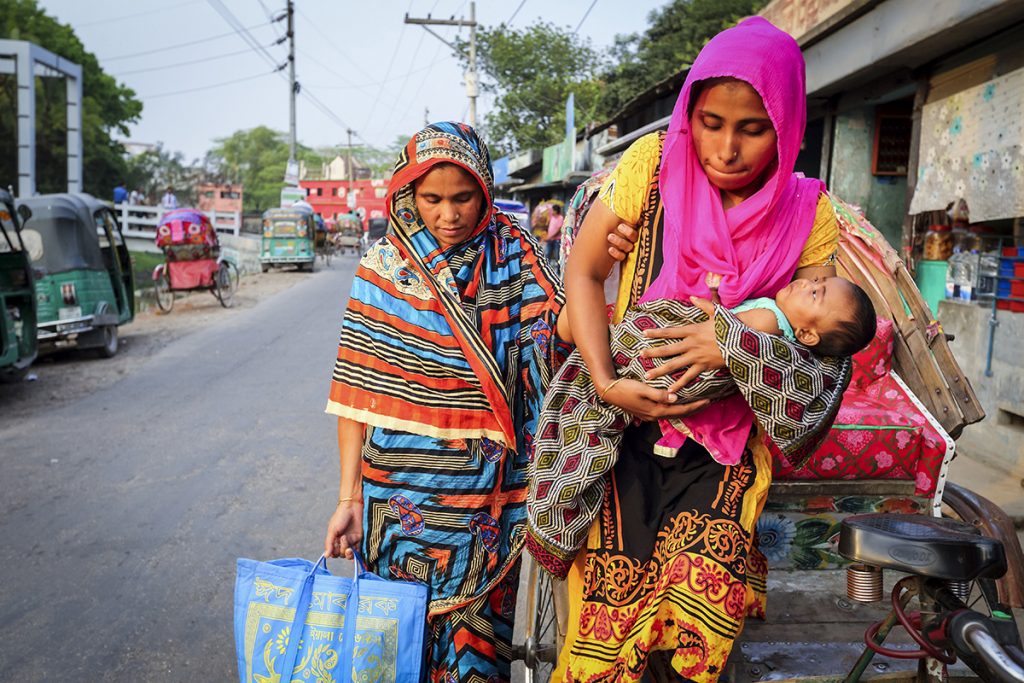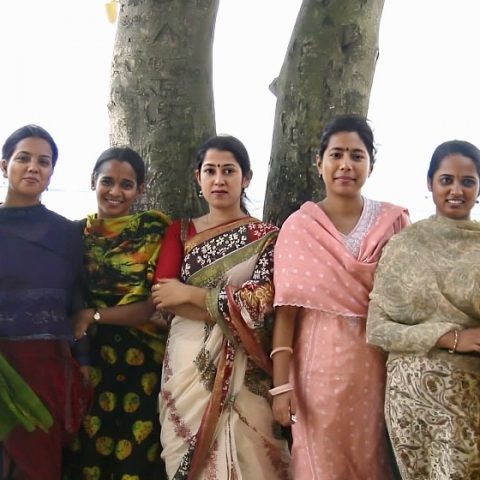New research by icddr,b in Bangladesh urges government to support measures to ensure balance between childcare and work for mothers.

Maintaining the balance of childcare while providing for the family income increases time constraints on women, with negative implications on the health status of children. Photo: GMB Akash / icddr,b
In almost all societies across the world, women play a vital role in the family structure responsible for the health and wellbeing of all family members. Usually they are assigned, by custom and norm, to be the primary caregivers of infants and children, responsible for breastfeeding, preparation of food and seeking timely preventative and curative medical care. Additionally, many women are also income generators for the family, whether it is formal or informal work. In poor countries, such contribution is likely to be essential for the family’s survival.
Maintaining the balance of childcare while providing for the family income increases time constraints on women, with negative implications on the health status of children.
Children are not admitted to a hospital on time or receive inadequate healthcare treatments because they are left in the care of a secondary caretaker while the primary caretaker is in employment.
The secondary caretakers (older siblings or extended family members) often do not have the financial means to support their charges especially in a medical emergency.
Severe Acute Malnutrition
One of the leading causes of deaths in under-five children is severe acute malnutrition (SAM). It is an extreme form of under-nutrition which is characterised by very low birth weight for height, visible signs of severe muscle wasting, and nutritional oedema.
More recently, researchers at International Centre for Diarrhoeal Disease Research, Bangladesh (icddr,b) investigated children with SAM who require hospitalisation and its correlation with working mothers. The study examined children with a median age of 10 months who were admitted to the institute’s Dhaka hospital. The majority of those admitted (85 per cent) were from the lower socioeconomic strata. While only 15 per cent of these children had mothers who were engaged in some form of employment, the mortality rate of the children with working mothers was much higher. This was in spite of adjustments made for age, gender, socioeconomic conditions, and Expanded Program on Immunisation vaccination schedule.
Children with mothers who worked were three times more likely to develop tuberculosis than those whose mothers remained at home (15 per cent vs five per cent).
The high death rates in children of working mothers is attributed to a mixture of socio-medical reasons, including the association between female employment and inadequate childcare, less variety in food, and less emphasis in practicing hand hygiene. Also, given that these women (whose children were admitted at Dhaka hospital) were less educated and belonged to less affluent and likely more conservative backgrounds, they were less inclined to have financial autonomy and little decision-making power in their families.
Work life balance for Mothers
Their limited education and knowledge, possibly a result of existing gendered norms which favour continued schooling for boys over girls, combined with their lack of control over the family’s economic affairs had a detrimental effect on the health of their child, and resulted in the child’s death in several cases.
Dr Tahmeed Ahmed, senior director at icddr,b offers an easy solution to mothers who may be struggling: “although work outside the home may be an imperative for many mothers, it does lead to some compromise in care and attention to children. This can be mitigated by engaging other family members in care giving, arranging flexible hours of work, and establishing crèches wherever possible”.
This time-consuming and resource-intensive imbalance and unequal distribution of care is preventing women and girls from advancing in other areas of their lives. Often they will rely on substitute caregivers and in countries such as Bangladesh this can fall to older children to shoulder the responsibility of caring for younger siblings. Given traditional gender roles, it will primarily be girls who drop out of school to bear this duty, halting their education with negative implications on their future economic status. This will in turn adversely affect the country’s economic growth.
icddr,b’s senior scientist and principal author of the study, Dr Mohammod Jobayer Chisti, notes that “encouraging political commitment in prioritising and highlighting the importance of female education is critical, as evident in many research studies.
Their enhanced knowledge may help to reduce under-five mortality and curb severe acute malnutrition as they become more aware of safer health and hygiene practices through continued education”.
The Government of Bangladesh has already developed a social protection system for women working in the textile industry, but this is mainly to protect them from workplace accidents.
This system needs to be extended to working mothers in other sectors (especially informal sectors), with paid maternity leave and a more concentrated emphasis – schemes and incentives – on access and availability of quality healthcare. It is important to start early, with mechanisms to ensure girls remain and finish their schooling and mothers returning to work can safely be assured their child is getting adequate care and when necessary, medical treatments.
Previously published on Six Degrees

